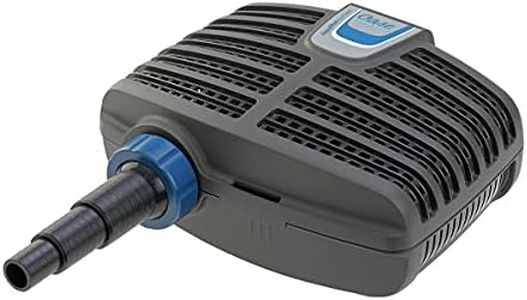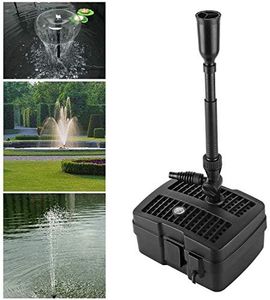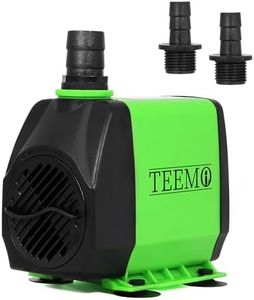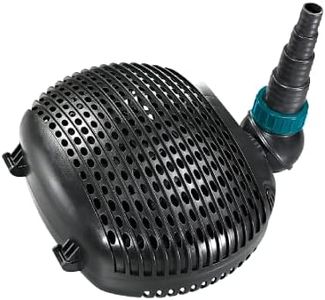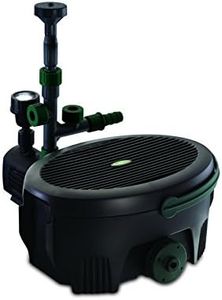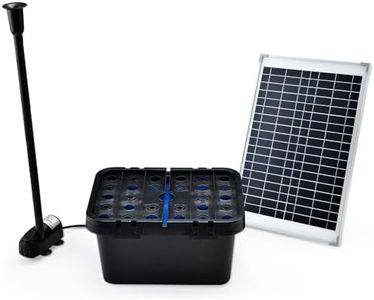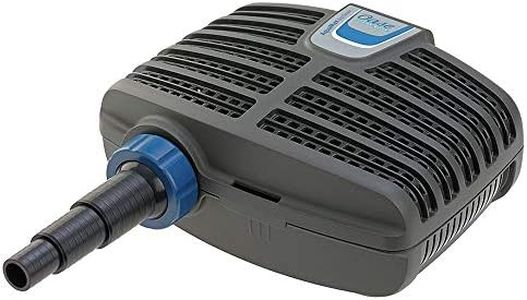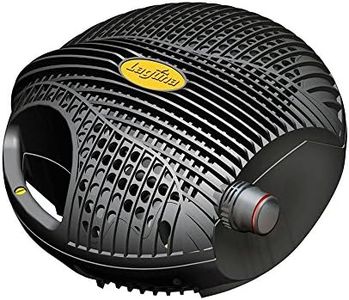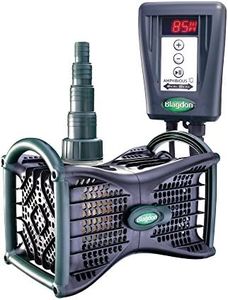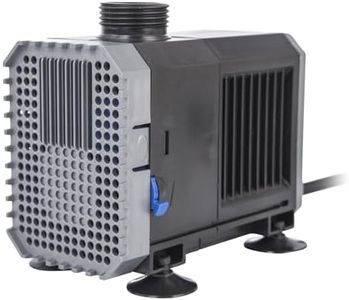We Use CookiesWe use cookies to enhance the security, performance,
functionality and for analytical and promotional activities. By continuing to browse this site you
are agreeing to our privacy policy
10 Best Pond Pumps
From leading brands and best sellers available on the web.Buying Guide for the Best Pond Pumps
Choosing the right pond pump is important for maintaining a healthy pond environment, whether it’s for a backyard water feature, koi pond, or even a small wildlife habitat. The main job of a pond pump is to circulate water, keeping it clean and well-oxygenated. When selecting a pump, it’s important to match the pump's abilities with the size and needs of your specific pond. Knowing a few key factors will help you make an informed decision and ensure your pump operates efficiently and reliably.Flow Rate (GPH or LPH)The flow rate, usually measured in gallons per hour (GPH) or liters per hour (LPH), represents how much water the pump can move in a given time. This is a critical spec because it affects how quickly water circulates through your pond. Ponds typically need all their water circulated at least once every one to two hours. Smaller ponds (under 500 gallons) can use lower flow rates between 200-500 GPH, while medium and large ponds will need pumps rated much higher—sometimes over 2,000 GPH. To pick the right flow rate, calculate your pond’s volume and ensure the pump can circulate it fully as recommended for your fish and plant needs.
Head Height (Maximum Lift)Head height, or maximum lift, is the greatest vertical distance a pump can push water upward. This matters if you have waterfalls, fountains, or need to lift water to a filter above water level. Smaller water features might only need a head height of 2-4 feet, while larger or multi-tiered waterfalls require pumps capable of 6 feet or more. To ensure your pump works with your setup, measure how high water needs to be lifted and choose a pump that can handle at least that head height.
Pump Type (Submersible vs. External/In-line)There are two main types of pond pumps: submersible, which sit under water, and external or in-line pumps, which sit outside the pond. Submersible pumps are easier to install, generally quieter, and best for small to medium ponds. External pumps tend to be more powerful and energy efficient, and suit larger ponds or formal water gardens. Your choice here should depend on pond size, ease of maintenance, and how visible you want the pump installation to be.
Energy EfficiencyEnergy efficiency refers to how much electricity the pump uses. Since pond pumps often run continuously, energy use can add up. Look for pumps that advertise low wattage or high efficiency, especially if you plan to run them year-round. Lower wattage is better for smaller ponds, while larger installations need to balance energy use with required power. Choose a pump with efficiency that fits your pond’s demands and how long you expect to run it each day.
Filtration CapabilitySome pond pumps include built-in filtration systems or can connect easily to external filters. This is especially important for ponds with fish or lots of plant debris. If your pond is clear and only decorative, this may be less critical. But for koi ponds or wildlife habitats, filtration helps keep water clear and healthy. Consider your pond’s exposure to leaves, fish load, and debris when deciding how much filtration you need.
Durability and MaintenanceDurability refers to how well the pump can handle regular use and potential debris. Good pumps are made from corrosion-resistant materials and can handle small bits of dirt or algae. Maintenance involves how easy it is to clean or service the pump. Ponds with lots of debris need pumps with easy-clean designs and good access to intakes. If you want a low-hassle experience, look for pumps known for durability and simple maintenance routines.

